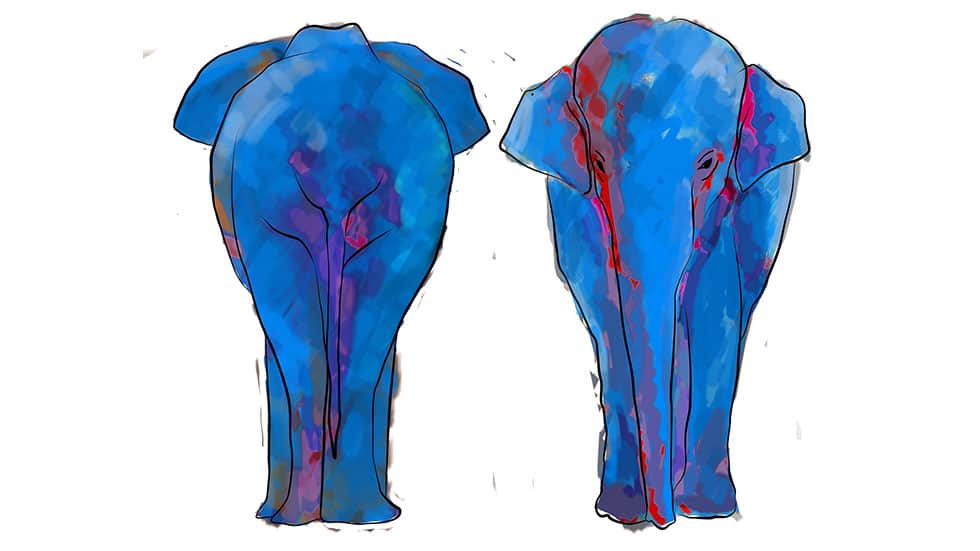Misinterpretation of the customer journey is the elephant in the room
Customer journeys have themselves been on a journey. Being based on campaign objectives, the traditional ‘journey’ definition tended to be campaign- or program-based; think cross-sell or welcome, respectively. This was valuable for generating insights, awareness and revenue – especially in the short-term.But directing in this way construes customers as targets to be shunted in their swathes along pre-planned routes – akin to applying guard rails in a bowling lane. This is highly assumptive, resulting in clunky targeting and a projection of the experiences brands wish customers to have. Importantly, it also overlooks vital context such as each customer’s sentiment, preferred channels, recent experiences and crucially, intent. A brand cannot then deliver on every customer’s needs; a risky strategy, as Thunderhead’s own customer journey research revealed.
In today’s customer-obsessed world, there is an abundance of buzzwords and conversation around customer-centricity– so it’s ironic that very few understand what a ‘customer journey’ actually means. The misinterpretation of the customer journey is the elephant in the room.
Overused, yet misunderstood: What is a customer journey?
There is only one way we should be considering customer journeys – and naturally, that’s from the perspective of our customers:
A customer journey must be customer-driven.
True customer journeys organize and adapt around the complex and evolving experiences of each individual customer: across all channels and, crucially, over time.
So, rather than ‘designing’ journeys for the good of a campaign (which by its nature, is short-term), marketers spend much more time listening to their customers over their lifetime – and enabling journeys to form organically. Once we can deduce and deliver on what someone seeks, ‘spray and pray’ marketing becomes ‘listen and provide’. We call these intent-driven journeys. And they are a game-changer.
Fostering one-to-one conversation, genuine customer journeys traverse all touchpoints and align around customer needs over the long term, with the fundamental aim of providing better long-term experiences. The journey itself (and delivering on customer needs) is then the focus, rather than any preconceived destination.
A more considered view
To visualize the full customer journey, brands need the ability to record, combine and parse information from every system handling customer data.
This is a challenging task, since associated platforms may be complex and proprietary, outmoded – or even unsupported. But it doesn’t have to be painful: by injecting an entirely new layer into the mix, fortunes change. The new customer operating system, or ‘hub’, will be capable of operating at a higher level than all existing systems; integrating directly, or pulling out data in a transparent and non-destructive way. For example, Thunderhead ONE provides access to a complete record of customer interactions, mobilizing context to fuel better experiences across the lifetime of every individual customer.
Forrester analysts are clear about the need for reappraisal in the Power of Customer Context Report: “Campaigns are far less effective at winning and retaining customers than they once were. To achieve sustainable competitive advantage, B2C marketers must deliver self-perpetuating cycles of real-time, two-way, insight-driven interactions with individual customers… [and] build a marketing strategy to address the end-to-end customer journeys – before, during, and after purchase.”
Making it happen: orchestrating the customer journey
The catalyst unlocking customer intent is our ability to respond in the moment. Naturally, intent-driven journeys require immediate action if we are to provide a convenient, seamless experience. Therefore, we must pull all available context, across every trackable channel, and communicate during the fleeting moment that our message is relevant.
Autonomous customer journey orchestration endows an organization with the ability to act appropriately (because it understands each situation), and usefully (because it also appreciates what the customer wants). At scale, this is the fastest, most effective way to build customer engagement and trust. It is this aspect that makes autonomous orchestration the cornerstone of our value exchange; when done right, it delivers satisfied, lifelong customers.
Thanks to a shift in mindset around customer engagement, and advancements in adtech and martech, industry understanding is changing. Today’s brands have a far more sophisticated understanding of, and an ability to implement, customer-led journeys. It’s time to rally round the true meaning of customer journey, calling out that elephant in the room. Because, after years of overpromising and hyperbole around being ‘customer centric’, it’s probably about time brands practice what they preach.
Contact us if you want to learn more about how to collect and utilize data from all your channels in the customer journey.
You might also like: 10 tips on customer journey mapping
This article by Jason Hemingway was originally published on Thunderhead’s blog. Reproduced with permission.


